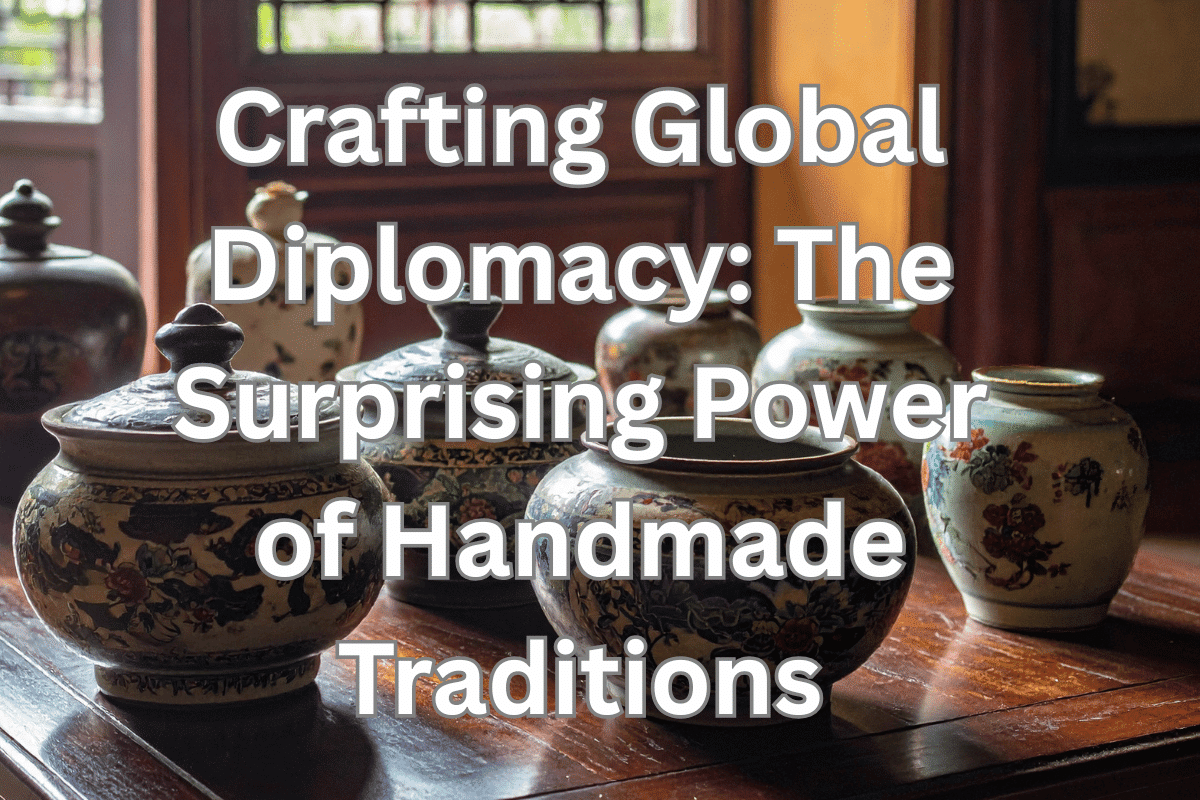What if I told you that the delicate art of crafting holds the power to shape global diplomacy? Beyond their aesthetic beauty, handmade traditions are quietly weaving a tapestry of international understanding.
Discover how a simple exchange of crafts can build bridges between nations, fostering cooperation where words alone might fail. In a world where political tensions often dominate headlines, it’s essential to explore alternative avenues for fostering peace and understanding. This blog post will take you on a journey through history, contemporary practices, and personal stories that illustrate the profound impact of crafting on global relations.
Table of Contents
- Unexpected Connection
- From Humble Hands to Global Bridges
- Threads of Connection: Modern Cultural Diplomacy in Action
- Beyond the Artifact: The Intangible Impact of Craft
- Crafting Tomorrow’s World: A Call to Action
- Deep Dive Podcast
- Related Questions
Unexpected Connection
You might think international relations are all about politics and treaties, but what if a humble pottery class or a weaving workshop is secretly playing a vital role?
Prepare to see a surprising side of global diplomacy, where intricate crafting traditions become powerful tools for fostering understanding and cooperation across diverse cultures. It’s time to redefine what true “diplomacy” looks like.
Crafting has been a part of human culture for millennia, serving not only practical purposes but also acting as a medium for cultural expression and communication.
The skills and traditions passed down through generations carry with them stories, emotions, and values that transcend language barriers. As we delve deeper into this topic, we will uncover how these artistic expressions can facilitate dialogue and foster relationships that contribute to global peace.
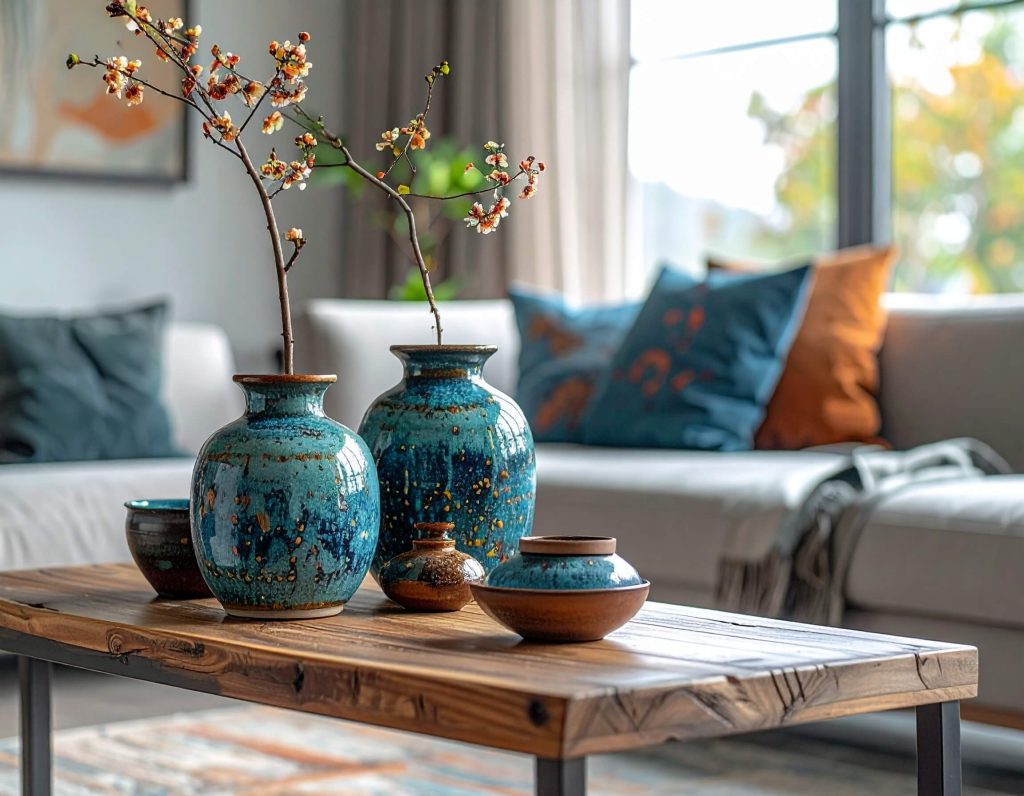
From Humble Hands to Global Bridges
The Visual Journey
Imagine a visually striking montage: hands crafting diverse objects intercut with iconic international landmarks. The hook: “What if the key to global peace wasn’t in treaties, but in… a handmade quilt?”
Read on as we will introduce the surprising power of craft and provide a brief overview of our journey to explore how often-overlooked traditions become tools for diplomacy.
Crafting is not merely an artistic endeavor; it is a form of communication that conveys cultural identity, history, and shared values. As we explore the historical context and modern implications of crafting, we will see how these practices have evolved and how they continue to play a significant role in fostering international understanding.
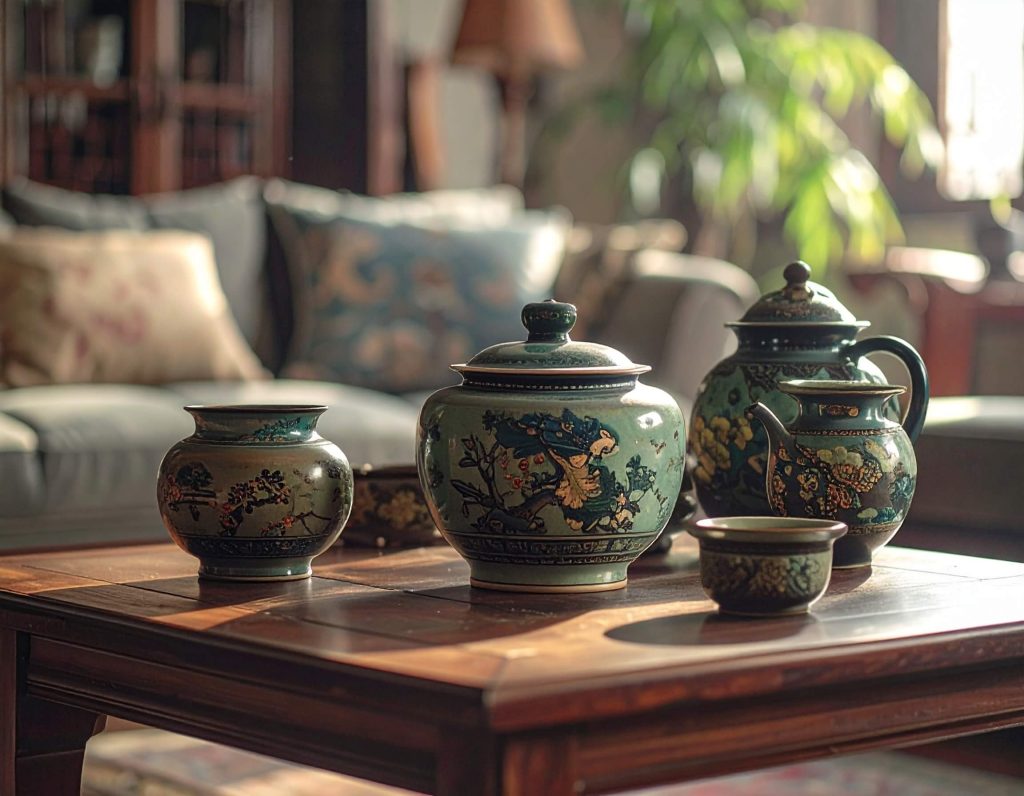
The Loom of Understanding: Ancient Roots of Craft Exchange
Let’s dive into historical examples, starting with the ancient trade routes that connected civilizations. The Silk Road, for instance, was not just a conduit for goods; it was a pathway for cultural exchange.
Artisans from different regions shared their techniques and materials, creating a rich tapestry of artistic expression that reflected the diverse cultures along the route.
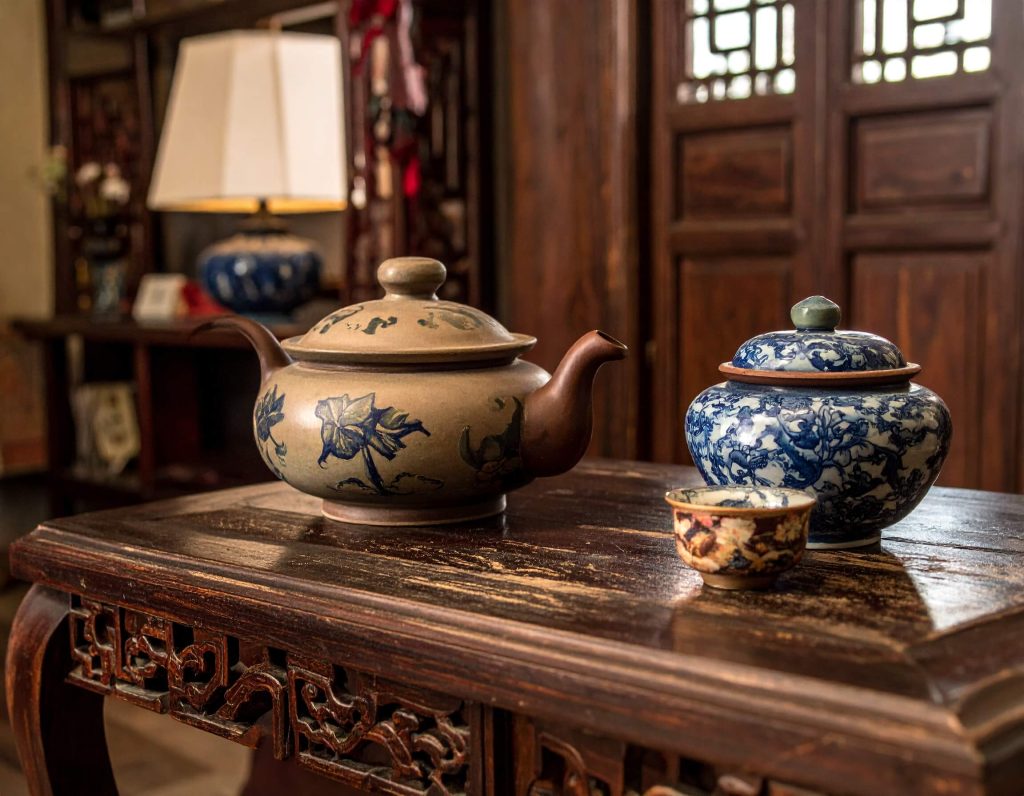
Diplomatic Gifts and Cultural Narratives
Diplomatic gifts of artisan goods, such as silk, pottery, and textiles, transcended mere commerce, embedding cultural narratives and mutual respect. These exchanges were not just transactions; they were expressions of goodwill that fostered relationships between nations.
For example, during the Ming Dynasty, Chinese porcelain was highly sought after in Europe. The exchange of these beautiful artifacts not only satisfied aesthetic desires but also laid the groundwork for diplomatic relations between China and European countries.
In ancient Egypt, the practice of gifting handmade items to foreign dignitaries was common. These gifts often included intricately crafted jewelry, pottery, and textiles, symbolizing the wealth and artistry of Egyptian culture.
Such exchanges helped to establish alliances and foster goodwill among nations. The act of giving a handcrafted item carried immense significance, as it represented not only the physical object but also the values and traditions of the giver’s culture.
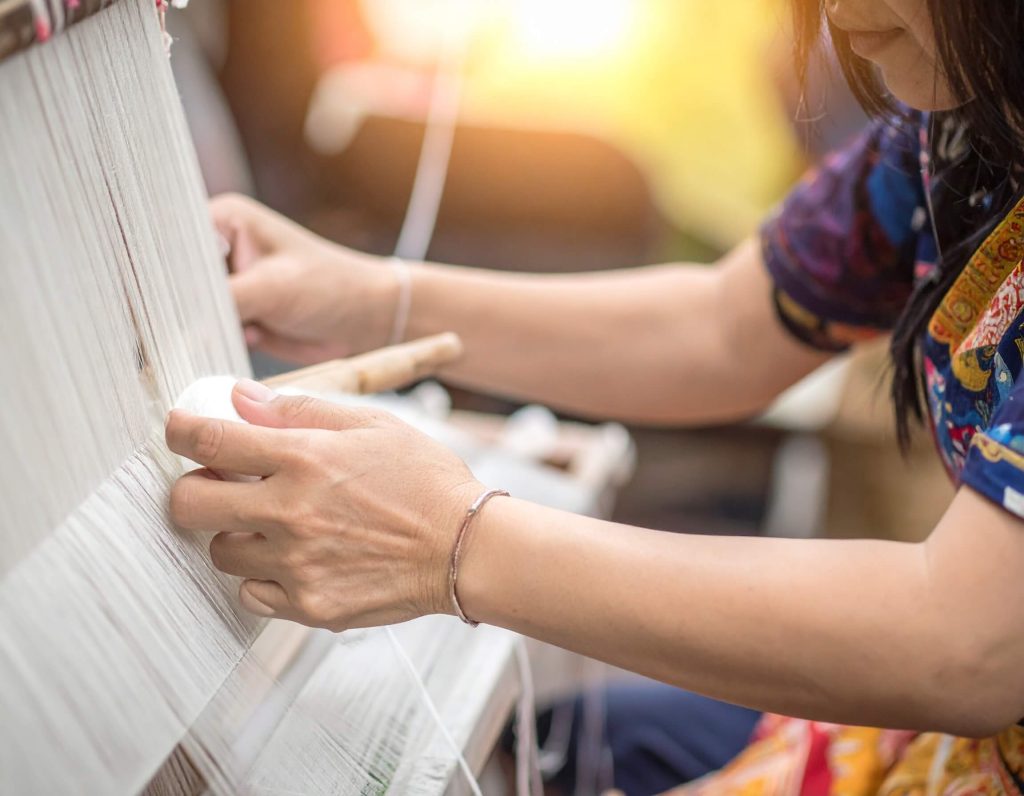
The Role of Craft in Ancient Civilizations
From ancient Mesopotamia to the Americas, crafting played a crucial role in the social and political fabric of societies. The artisans of these civilizations were often held in high regard, as their skills were essential for both everyday life and ceremonial occasions.
The creation of intricate pottery, textiles, and metalwork was not only a means of survival but also a way to express cultural identity and communicate values.
As we transition from ancient empires to modern initiatives, we recognize that the human need for connection remains a constant force in diplomacy.
The desire to share knowledge, skills, and cultural practices continues to drive individuals and communities to engage in crafting traditions, creating opportunities for dialogue and understanding.

Threads of Connection: Modern Cultural Diplomacy in Action
Today, contemporary organizations and programs are facilitating international craft exchanges that promote cultural diplomacy. These initiatives harness the power of crafting to foster understanding and cooperation among diverse communities.
Contemporary Examples of Craft Exchange
One notable example is the Crafting Peace Initiative, which brings together artisans from conflict-affected regions to collaborate on projects that promote healing and reconciliation.
Through workshops and shared crafting experiences, participants learn to communicate and work together, breaking down barriers that often divide them. The act of creating something beautiful together fosters a sense of community and shared purpose, paving the way for lasting relationships.
Another inspiring example is the Women’s Textile Project, which empowers women from various cultural backgrounds to share their traditional weaving techniques. By participating in workshops, these women not only learn from one another but also gain economic independence and confidence.
The textiles created through this collaboration often tell stories of resilience and hope, showcasing the power of craft to uplift individuals and communities.
The Tangible Outcomes of Craft Exchanges
These modern initiatives demonstrate the tangible outcomes of craft exchanges, including economic uplift, skill sharing, and the dismantling of stereotypes. For instance, a pottery workshop in a post-conflict region may provide local artisans with the skills and resources needed to rebuild their lives and communities. By participating in these workshops, individuals gain valuable skills that can lead to economic opportunities and a sense of purpose.
Moreover, craft exchanges challenge preconceived notions about different cultures. When individuals from diverse backgrounds come together to create, they share their stories and experiences, fostering empathy and understanding.
This process helps to dismantle stereotypes and build connections that transcend cultural differences.
Beyond the Artifact: The Intangible Impact of Craft
While the physical artifacts created through crafting are significant, the intangible impact of these exchanges is equally profound. The personal stories of crafters and recipients reveal how these interactions foster empathy and change perceptions.
The “Soft Power” of Craft
The concept of “soft power,” coined by political scientist Joseph Nye, refers to the ability to influence others through attraction and persuasion rather than coercion.
Crafting embodies this idea, as it builds relationships where traditional diplomacy struggles. The act of making and sharing a craft communicates values, history, and humanity without words.
Consider the story of a potter from a war-torn region who participates in an international pottery exchange. Through the process of creating together with artisans from other cultures, she finds common ground and shared experiences.
The friendships formed during these workshops transcend political differences, illustrating how crafting can serve as a bridge for understanding.
Personal Stories of Transformation
The personal narratives of individuals involved in craft exchanges highlight the transformative power of these experiences.
For example, a participant in a weaving workshop may initially arrive with preconceived notions about the other participants. However, as they work side by side, sharing techniques and stories, they begin to see each other as individuals rather than representatives of their respective cultures.
These exchanges create spaces for dialogue and connection, allowing participants to explore their shared humanity. The friendships forged through crafting can lead to lasting collaborations, further promoting cultural understanding and cooperation.
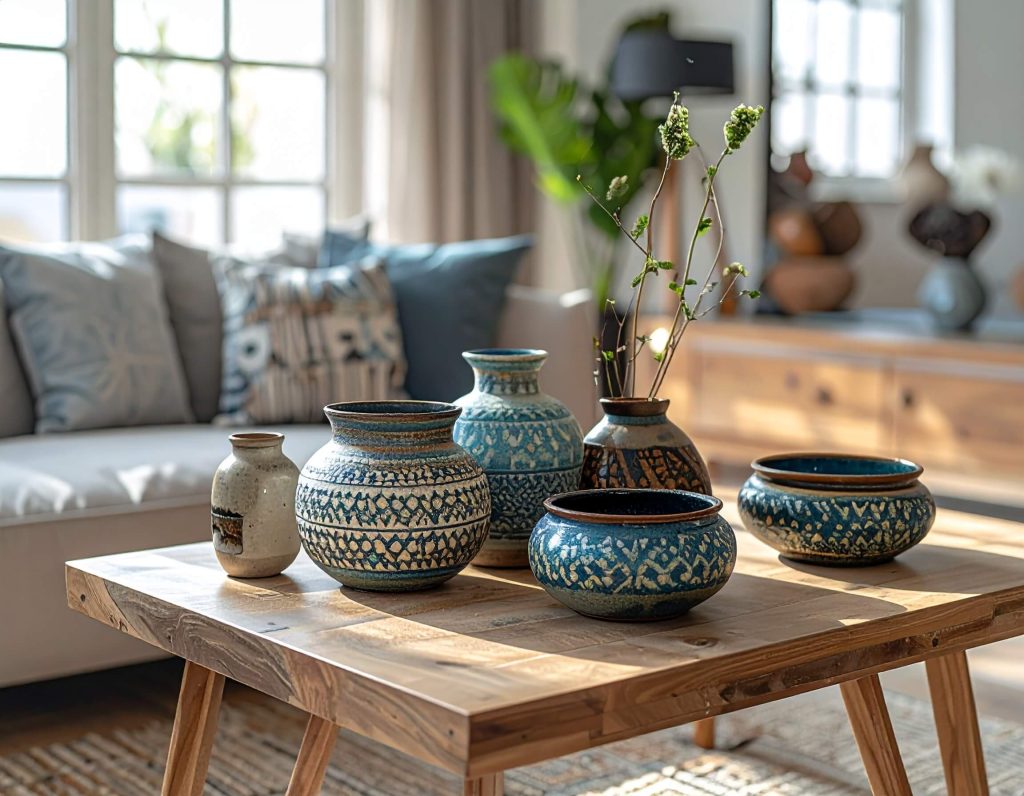
Crafting Tomorrow’s World: A Call to Action
As we look to the future of cultural diplomacy through craft in an increasingly interconnected world, there are many ways for individuals to engage in this movement. Supporting fair trade artisans, seeking out cultural craft experiences, or sharing your own skills with others can contribute to building a more understanding global community.
Engaging with Craft Traditions
- Support Fair Trade Artisans: By purchasing handcrafted items from fair trade artisans, you contribute to sustainable livelihoods and empower communities to preserve their cultural traditions. Look for fair trade organizations that prioritize ethical practices and support artisans in developing countries.
- Participate in Cultural Craft Experiences: Seek out workshops and classes that allow you to learn about different crafting traditions. Engaging with artisans from diverse backgrounds can deepen your understanding of their cultures and foster connections that transcend borders.
- Share Your Skills: Consider sharing your own crafting skills with others. Organize workshops in your community to teach traditional crafts or collaborate with local organizations to promote cultural exchange. By sharing your knowledge, you contribute to the preservation of crafting traditions and foster understanding among different cultures.
Every stitch, every carve, every pot has the potential to weave a stronger, more understanding global fabric.
As we navigate an increasingly complex world, the importance of cultural diplomacy through craft cannot be overstated. It offers a unique avenue for fostering connections, promoting empathy, and building bridges between nations.
The delicate art of crafting is not merely a pastime; it is a powerful vehicle for diplomacy and understanding. Let’s celebrate the beauty of handmade traditions and their ability to create lasting bonds between cultures, one crafted piece at a time. By recognizing the significance of crafting in our global society, we can work together to build a more peaceful and interconnected world.
Deep Dive Podcast
Listen to our Deep Dive Podcast.
If you are interested in seeing how Mondoro can be a valuable partner for your home decor and home furnishing products – we would love to talk to you to see how we can help you.
Find out more about how Mondoro can help you create, develop, and manufacture excellent home decor and home furniture products – don’t hesitate to contact me, Anita. Check out my email by clicking here, or become a part of our community and join our newsletter by clicking here.
Mondoro gives out a FREE Lookbook to anyone interested. You can receive a copy of our latest Lookbook by clicking here.
Listen to our Podcast called Global Trade Gal. You can find it on all major podcast platforms. Try out to listen to one of our podcasts by clicking here.
Subscribe to our Mondoro Company Limited YouTube Channel filled with great videos and information by clicking here.
Related Questions
How Do I Find an Overseas Manufacturer to Produce My Own Product Ideas?
To find a reliable overseas manufacturer to produce your own product ideas, here are some basic steps you can take 1) Find a reliable agent to help you find manufacturers 2) attend trade shows in your industry 3) research online 4) talk to trade organization and 5) try to get a referral from someone in your industry.
You can discover more by reading our blog How Do I Find an Overseas Manufacturer to Produce My Own Product Ideas? by clicking here.
How to Manufacture Home Decor Products in China?
To be successful in manufacturing home decor products in China, you should first understand China today and the forces that are driving it. Then clearly understand what kind of home decor products China has a competitive advantage with. Finding a good supplier is not always easy as not all the good manufacturers will show at the trade shows. So you may be better off to find an agent to work with that knows the industry. In the home furnishing and home decor business, one of the most important things a supplier needs to do is to be willing to develop products, but not all suppliers are willing to do this. In fact, it may be hard for many factories to get to know the owner and build a relationship with them. This can hurt you when you are trying to develop products or get favorable payment terms.
You can learn more by reading our blog 10 Tips to Manufacturing Home Décor Products in China by clicking here.
How Do You Make A Bamboo Lamp Shade? All About Bamboo Lampshades
To manufacture or make bamboo lampshades, you need to 1) properly prepare the bamboo materials, 2) build a metal frame, 3) wrap the metal frame, 4) secure the bamboo onto the metal frame, 5) spray color on top of the bamboo shade if you desire the lampshade to be a color other than natural and 6) spray a top coat on the entire shade to protect the bamboo shade’s finish.
You can read our blog about How Do You Make A Bamboo Lamp Shade? All About Bamboo Lampshades by clicking here.

